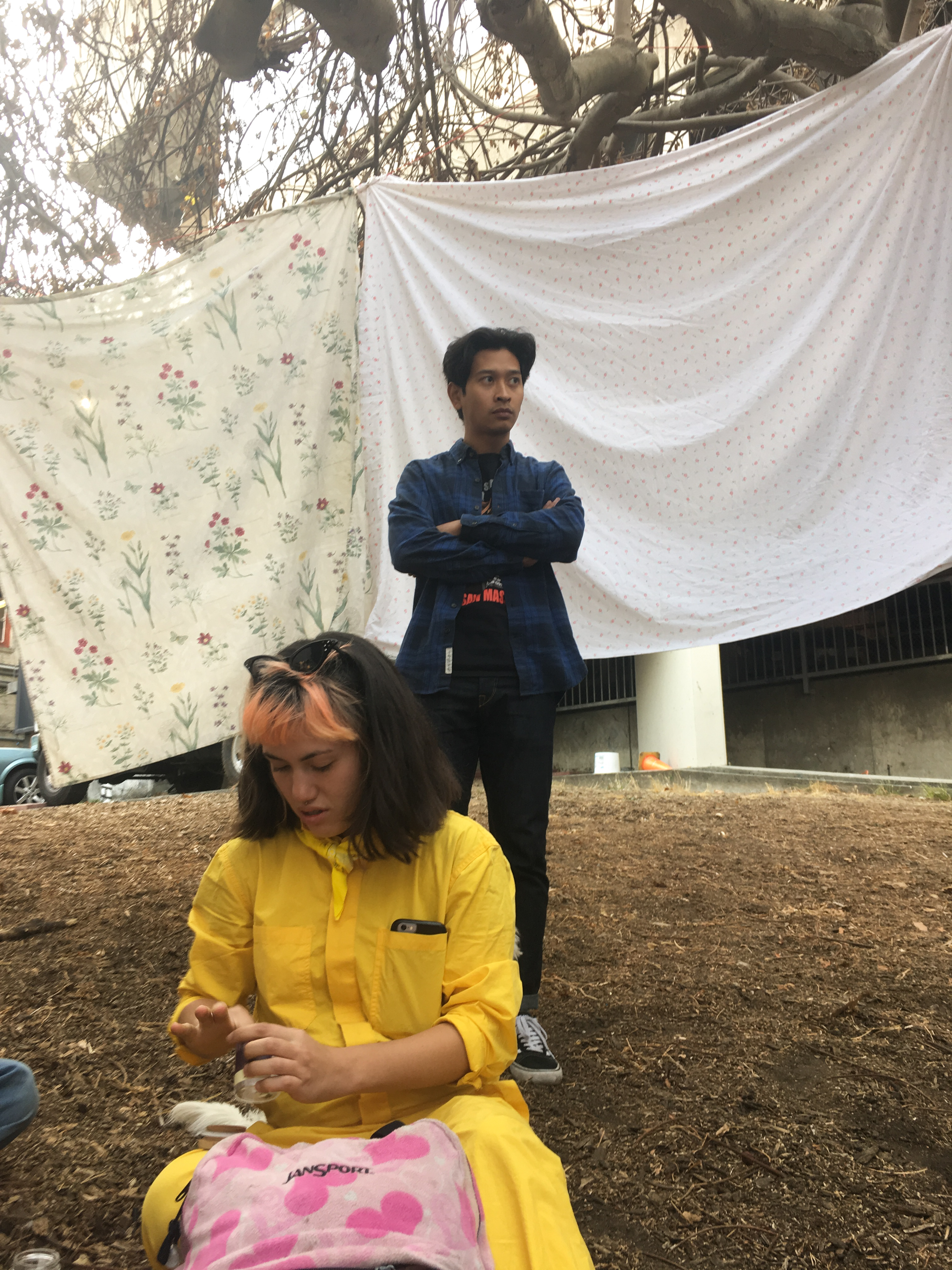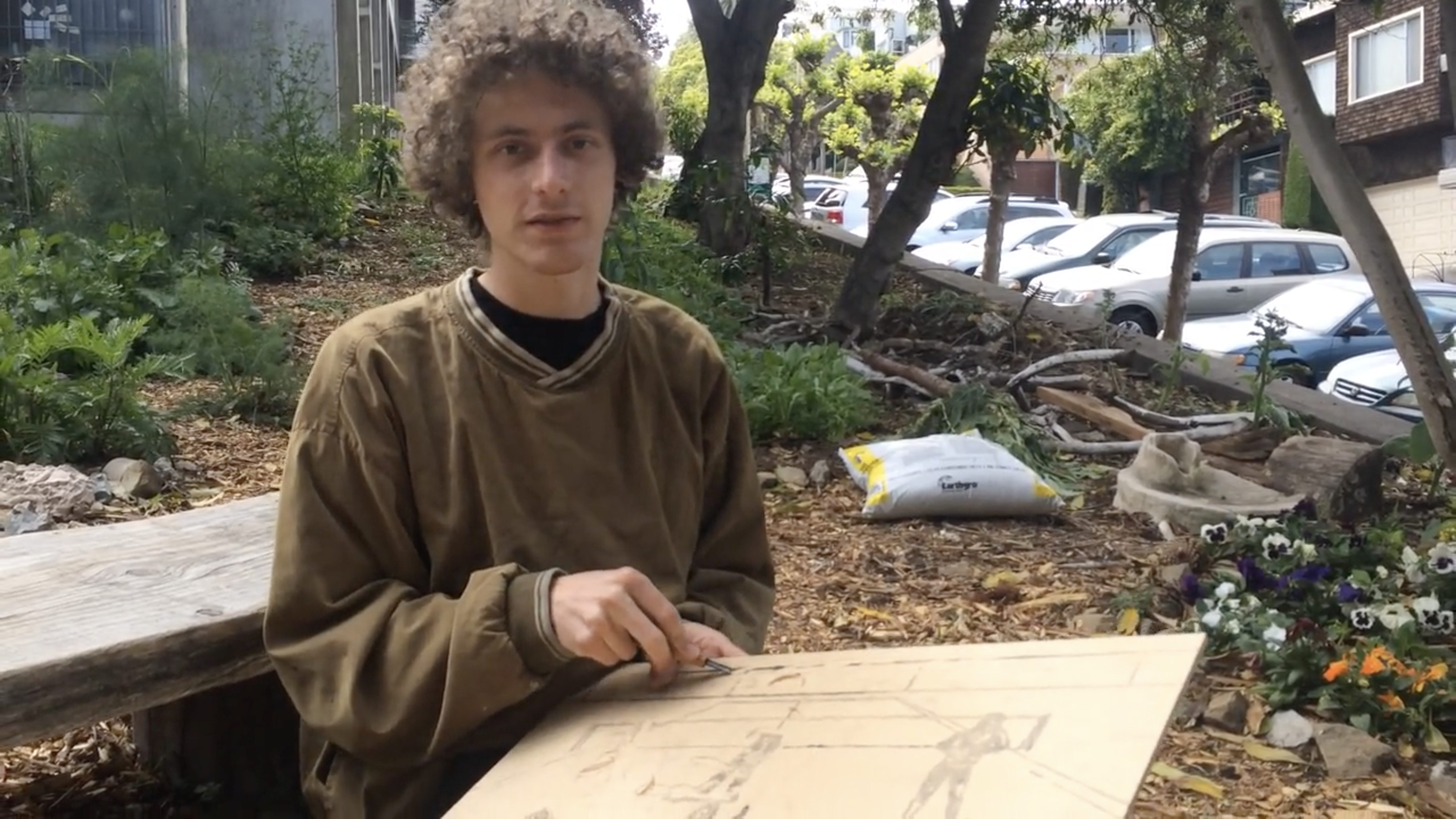
Gardening while sheltering in place can be a solitary activity, but I am very far from alone when I’m in the garden. Countless people have been connected with the SFAI meadow. And one of the ways we can think about this is through the plants themselves.
When I started working in the meadow in fall 2014, I made an informal policy for myself that plants would come primarily from cuttings, seedlings, and divisions from friends’ gardens, or through donations.
If we start with one plant, the California Ribes in the bed near the redwood, the connections immediately start to radiate through too many associations to record here, but this plant is a fruitful place to start, as it is one of the anchors of the meadow and there are ribes growing in each of the major areas. The one next to the redwood started from a four-inch cutting from my friend Julie Westcott.
My own garden education had taken place mainly on the East Coast, and my sensibility had not yet tuned to the profound beauty and intelligence of the plants of the California landscape. I felt that I was only beginning to see them. Seeing Julie’s appreciation for them as she shared many cuttings and seeds set in motion a close affinity for the plants of this landscape. One day when I met Julie at the Asian Art Museum she handed me a coat check card which I later exchanged for a lovely coffee berry seedling that is now about six feet tall and part of a grouping of understory plantings that includes toyon, Elderberry, and saltbush.
Another example is the elderberry. My friend Mary Muszynski, a landscape architect who has volunteered at the meadow since 2015, picked up six of these in two-inch pots from Oaktown Natives, and we planted them in different spots throughout the meadow. In planting them, we had a small gathering to mark the death of a friend, a landscaper and writer, who had generously donated plants to get the garden started. The Verbascum he brought to the meadow in our first year is now well established and a favorite of the bees. The elderberries are robust now, offering tall perches to hummingbirds, and this year several friends harvested berries to make tinctures and preserves.
Salvia involucrata (or rosebud sage) grows throughout the meadow and came from a cutting from my friend Marcia Lieberman, a gardener and Zen priest I met at the San Francisco Zen Center. The cutting came from a visit to her garden in Bernal Heights in 2014. I’ve in turn shared that salvia with many friends, and it’s another one the hummingbirds especially love. We also have a rose geranium that originated at Green Gulch Farm that carries echoes of the San Francisco Zen Center. (This is a subtle extension of a strand of connection beginning in the late ‘60s with SFZC and SFAI.)
Another way the meadow holds the presence of those who pass through it is through the traces of the care someone brings to a plant, or to building a bed, or shaping a border. A student in fall 2014 did a project in which he invoked the two rivers in his home city of Beijing by feeding a garden hose into a five-gallon bottle with two holes drilled in it. The water flowed through in two currents that etched a small “riverbed” into the freshly turned soil. These rivulets then became a planting, which in turn created the edges of the beds that remain until this day, six years later.
When I started working in the meadow in fall 2014, I made an informal policy for myself that plants would come primarily from cuttings, seedlings, and divisions from friends’ gardens, or through donations.
If we start with one plant, the California Ribes in the bed near the redwood, the connections immediately start to radiate through too many associations to record here, but this plant is a fruitful place to start, as it is one of the anchors of the meadow and there are ribes growing in each of the major areas. The one next to the redwood started from a four-inch cutting from my friend Julie Westcott.
My own garden education had taken place mainly on the East Coast, and my sensibility had not yet tuned to the profound beauty and intelligence of the plants of the California landscape. I felt that I was only beginning to see them. Seeing Julie’s appreciation for them as she shared many cuttings and seeds set in motion a close affinity for the plants of this landscape. One day when I met Julie at the Asian Art Museum she handed me a coat check card which I later exchanged for a lovely coffee berry seedling that is now about six feet tall and part of a grouping of understory plantings that includes toyon, Elderberry, and saltbush.
Another example is the elderberry. My friend Mary Muszynski, a landscape architect who has volunteered at the meadow since 2015, picked up six of these in two-inch pots from Oaktown Natives, and we planted them in different spots throughout the meadow. In planting them, we had a small gathering to mark the death of a friend, a landscaper and writer, who had generously donated plants to get the garden started. The Verbascum he brought to the meadow in our first year is now well established and a favorite of the bees. The elderberries are robust now, offering tall perches to hummingbirds, and this year several friends harvested berries to make tinctures and preserves.
Salvia involucrata (or rosebud sage) grows throughout the meadow and came from a cutting from my friend Marcia Lieberman, a gardener and Zen priest I met at the San Francisco Zen Center. The cutting came from a visit to her garden in Bernal Heights in 2014. I’ve in turn shared that salvia with many friends, and it’s another one the hummingbirds especially love. We also have a rose geranium that originated at Green Gulch Farm that carries echoes of the San Francisco Zen Center. (This is a subtle extension of a strand of connection beginning in the late ‘60s with SFZC and SFAI.)
Another way the meadow holds the presence of those who pass through it is through the traces of the care someone brings to a plant, or to building a bed, or shaping a border. A student in fall 2014 did a project in which he invoked the two rivers in his home city of Beijing by feeding a garden hose into a five-gallon bottle with two holes drilled in it. The water flowed through in two currents that etched a small “riverbed” into the freshly turned soil. These rivulets then became a planting, which in turn created the edges of the beds that remain until this day, six years later.














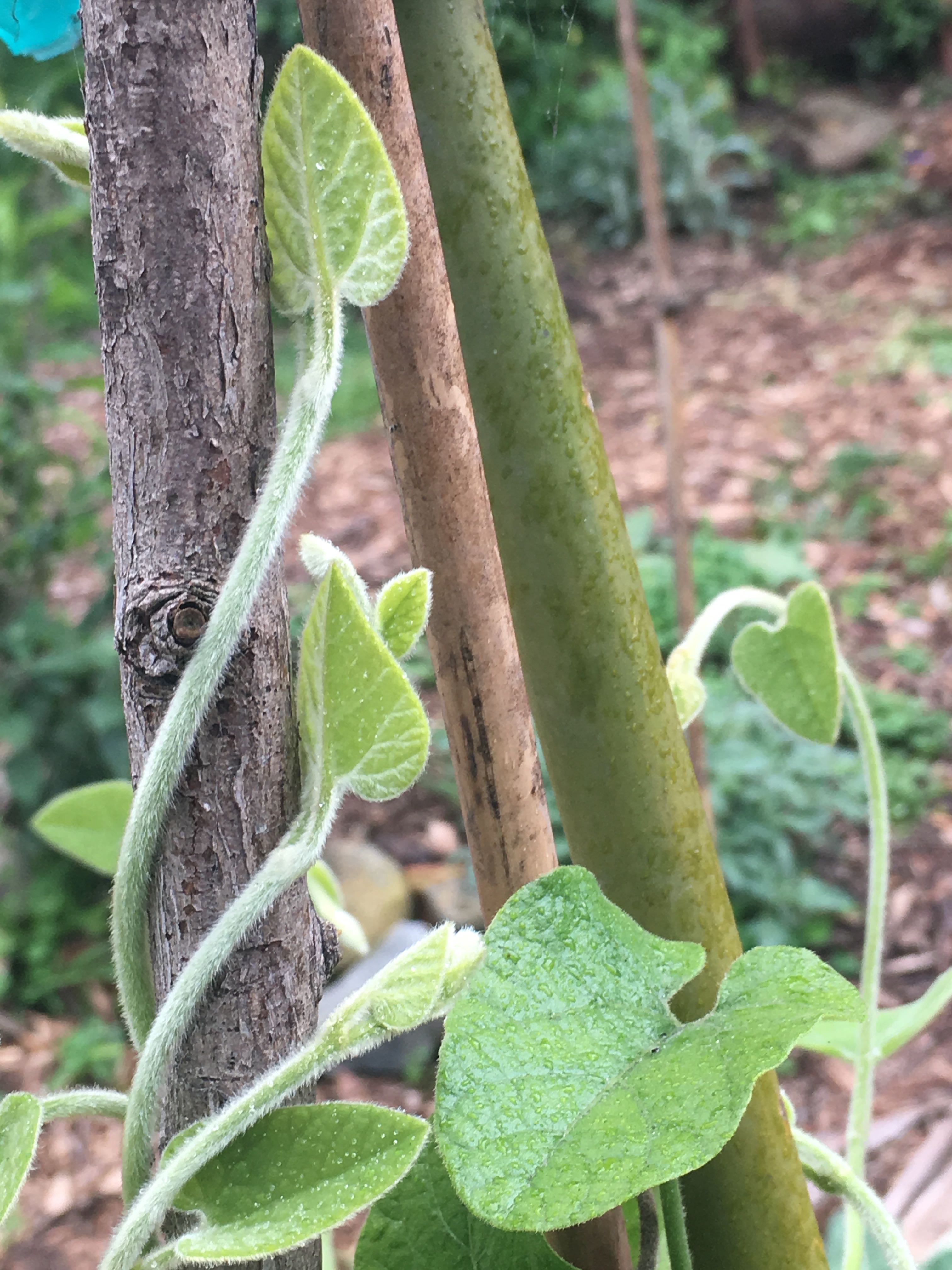










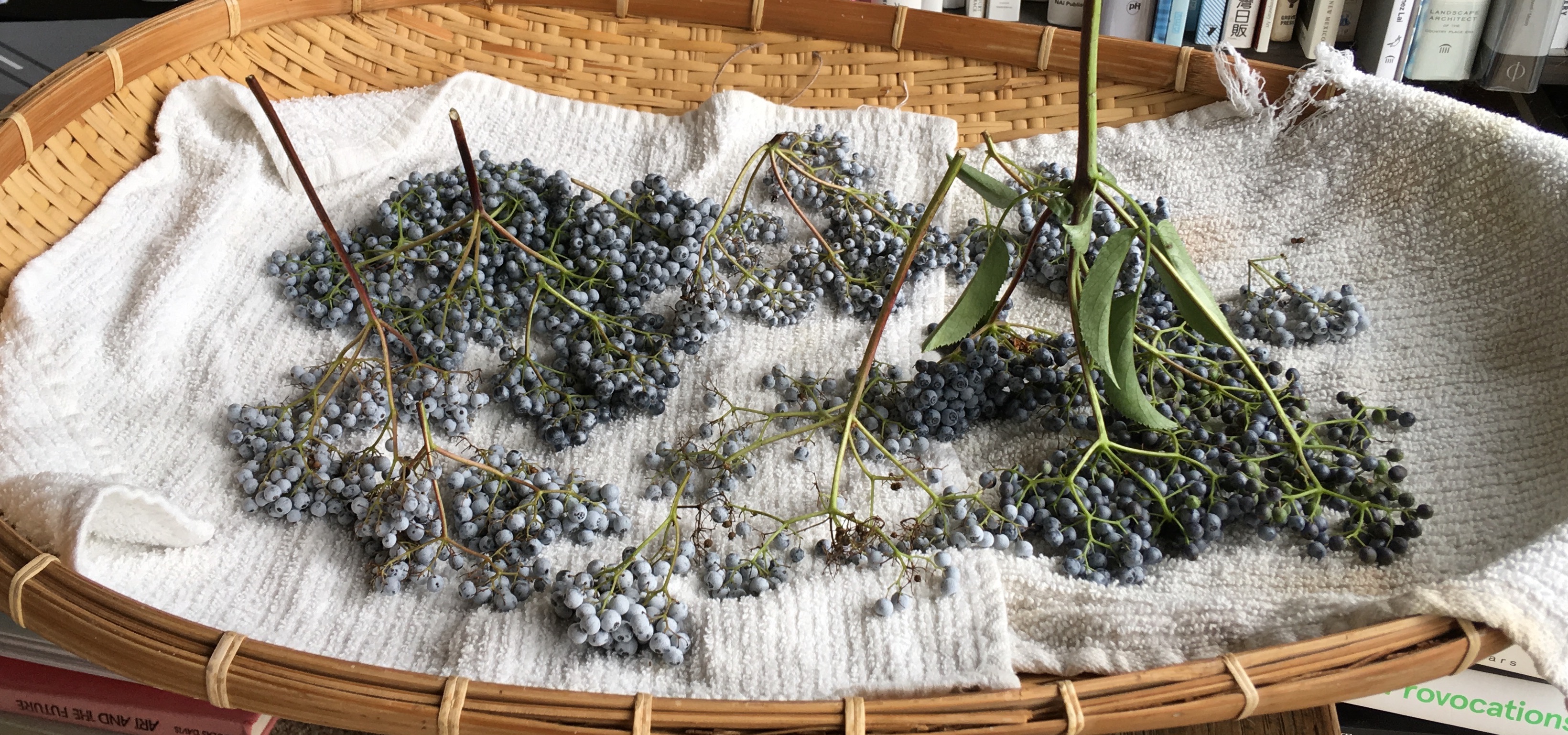









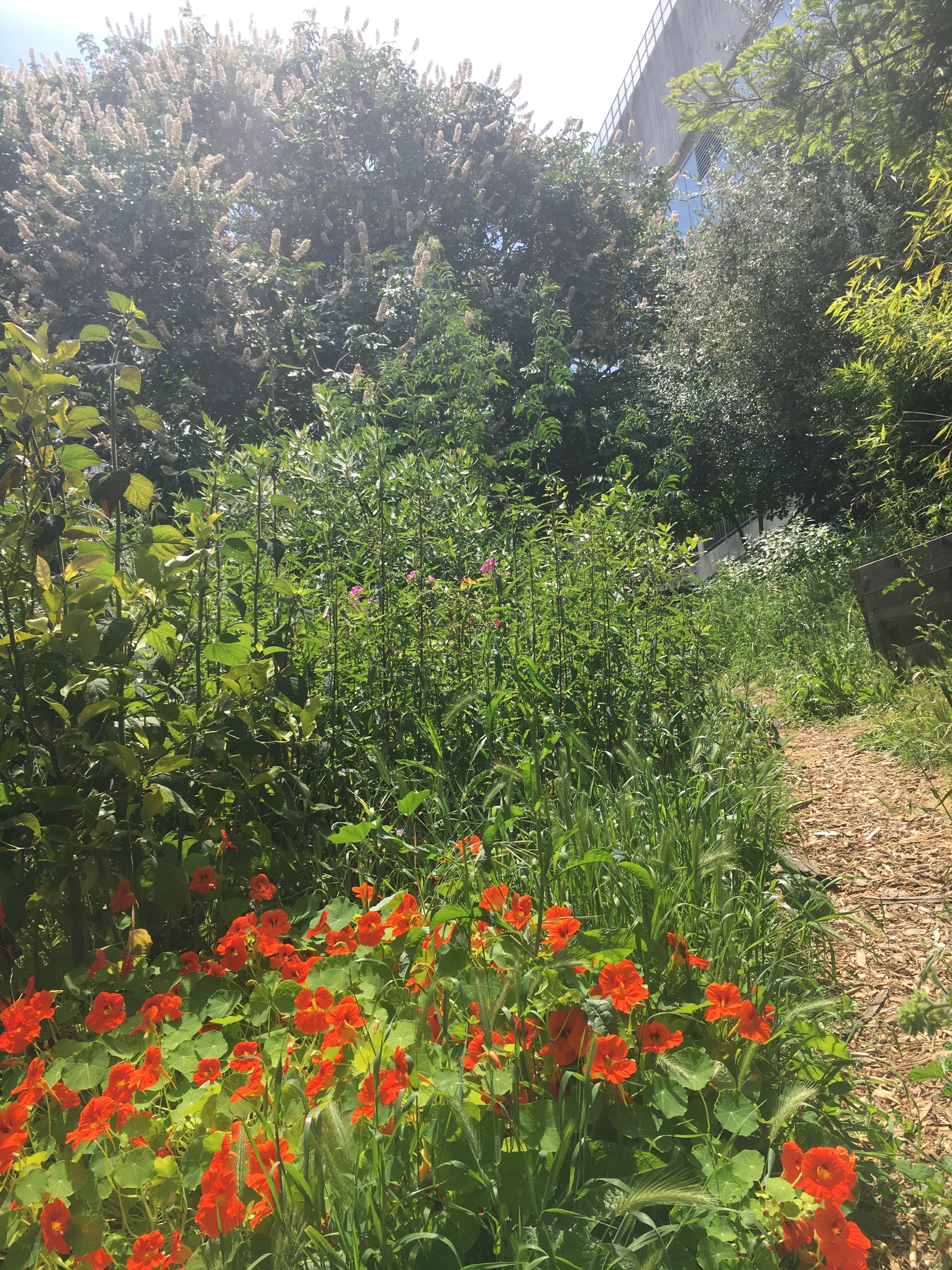

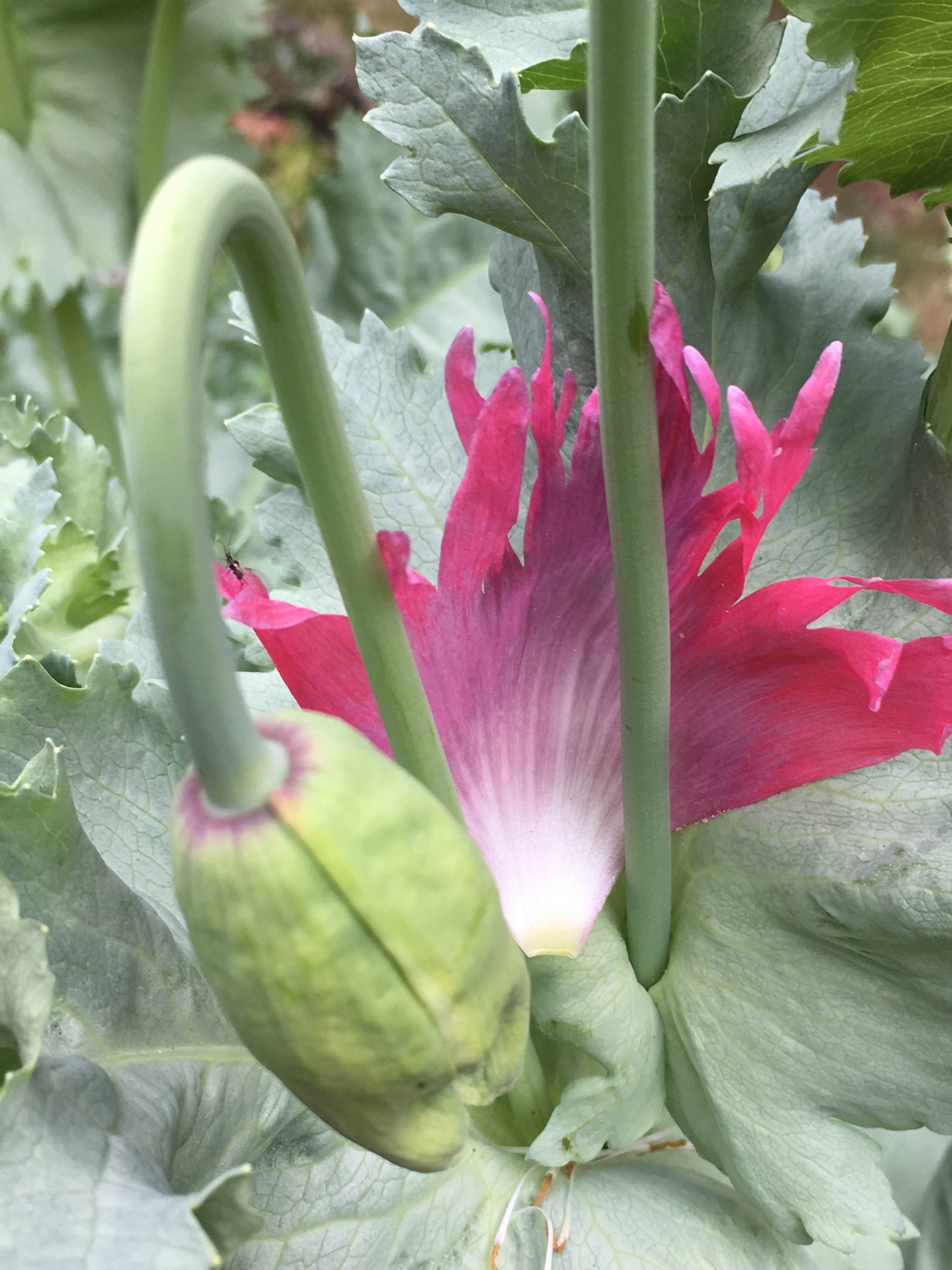



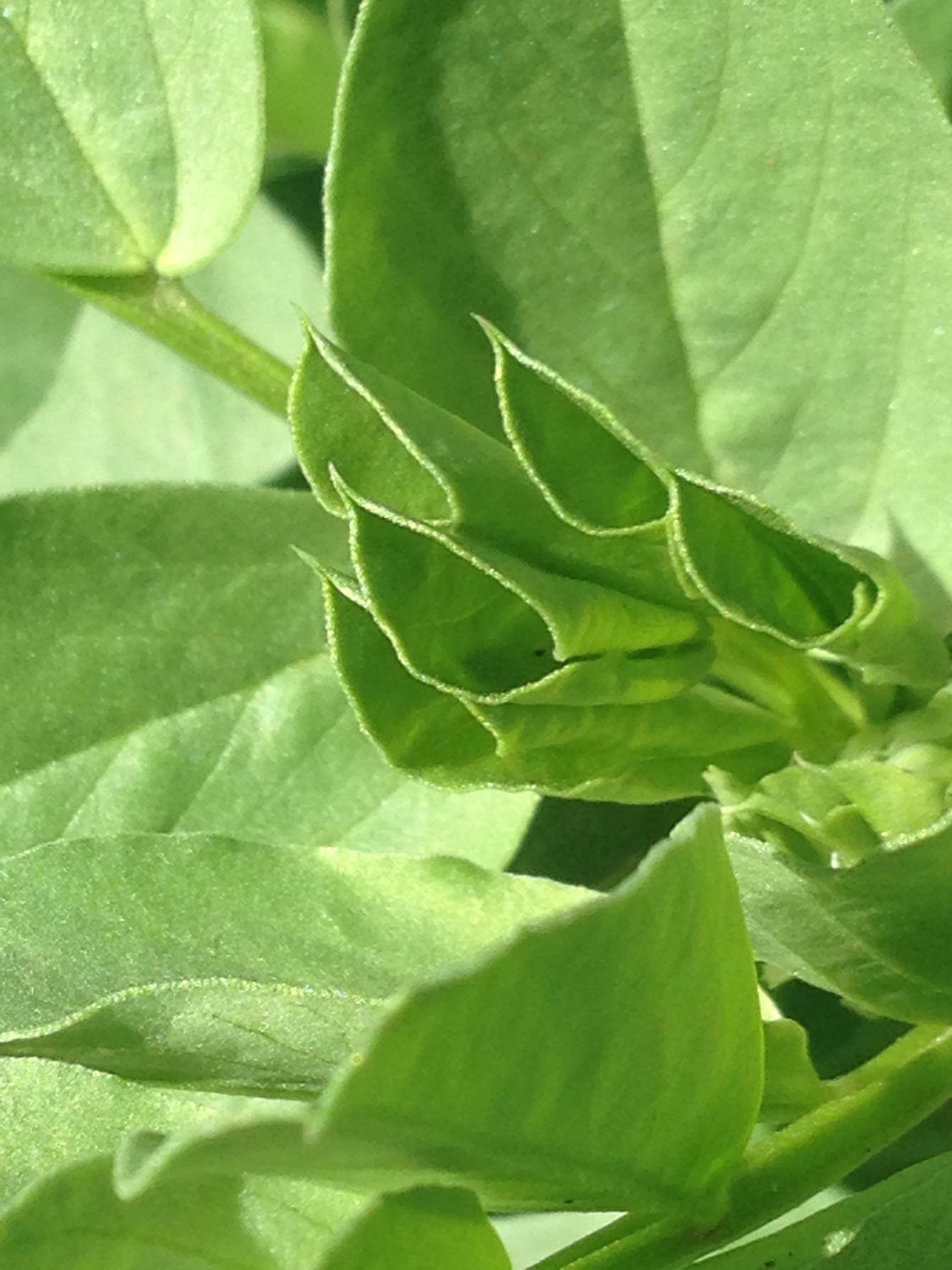




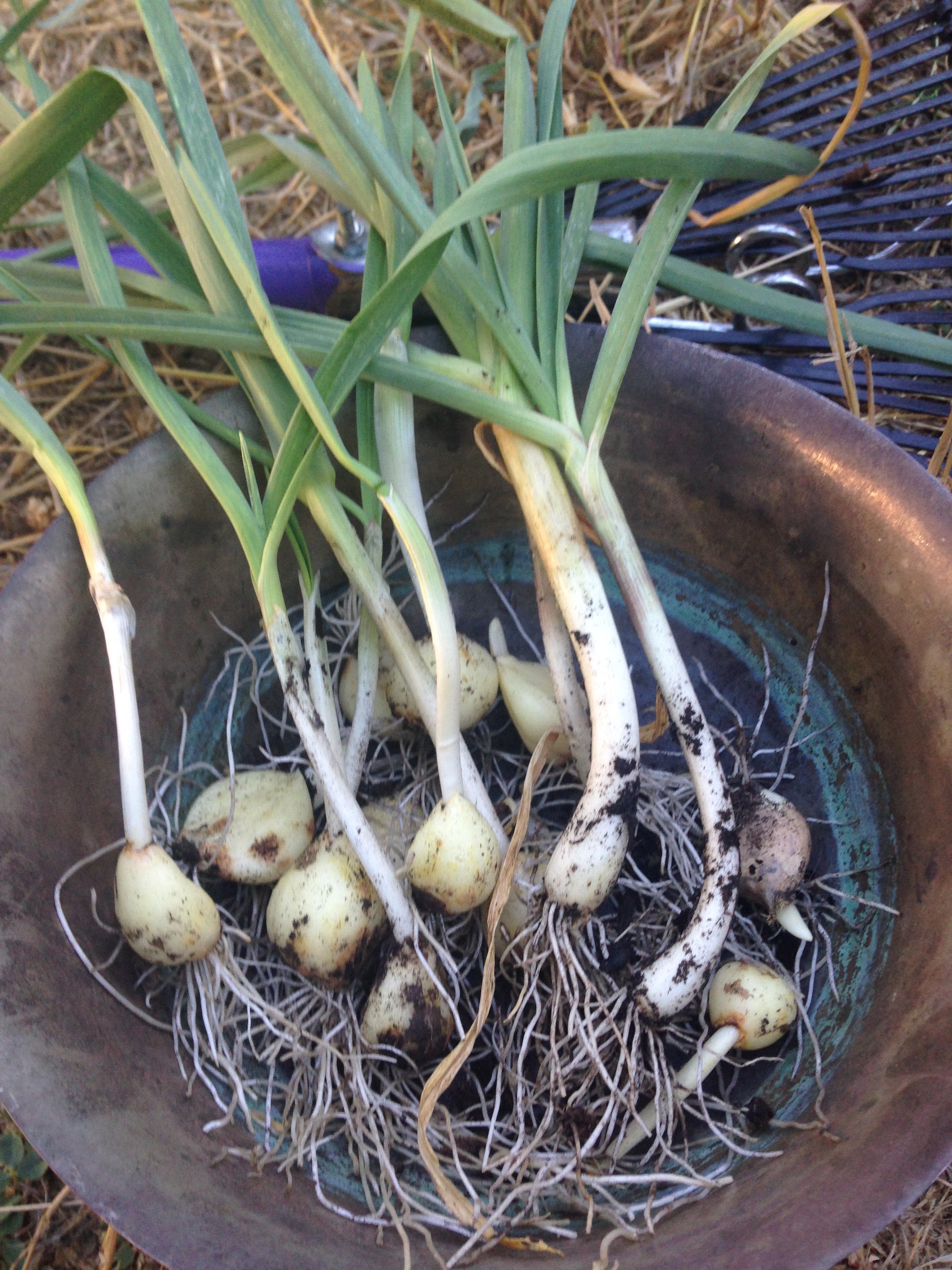



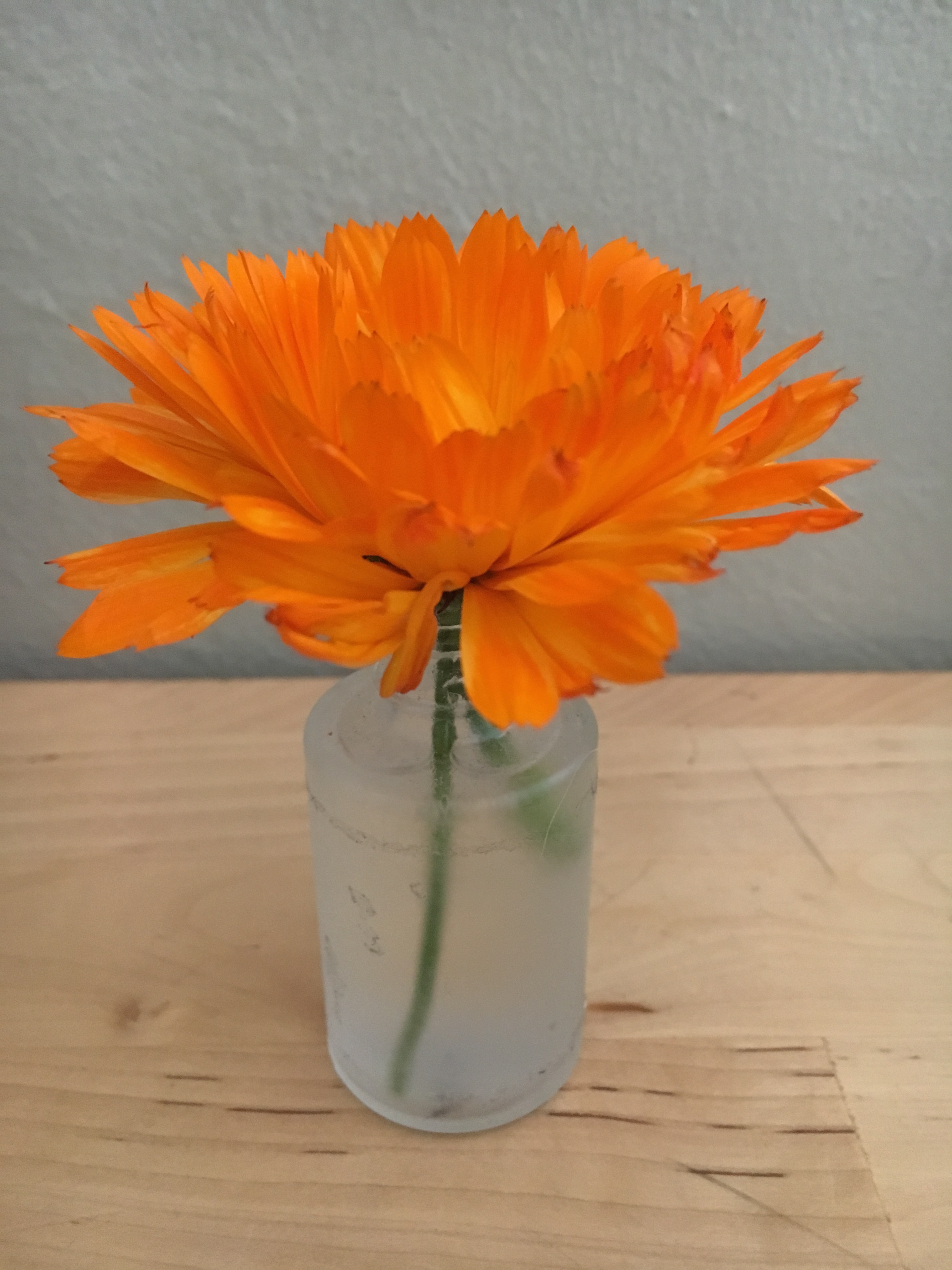
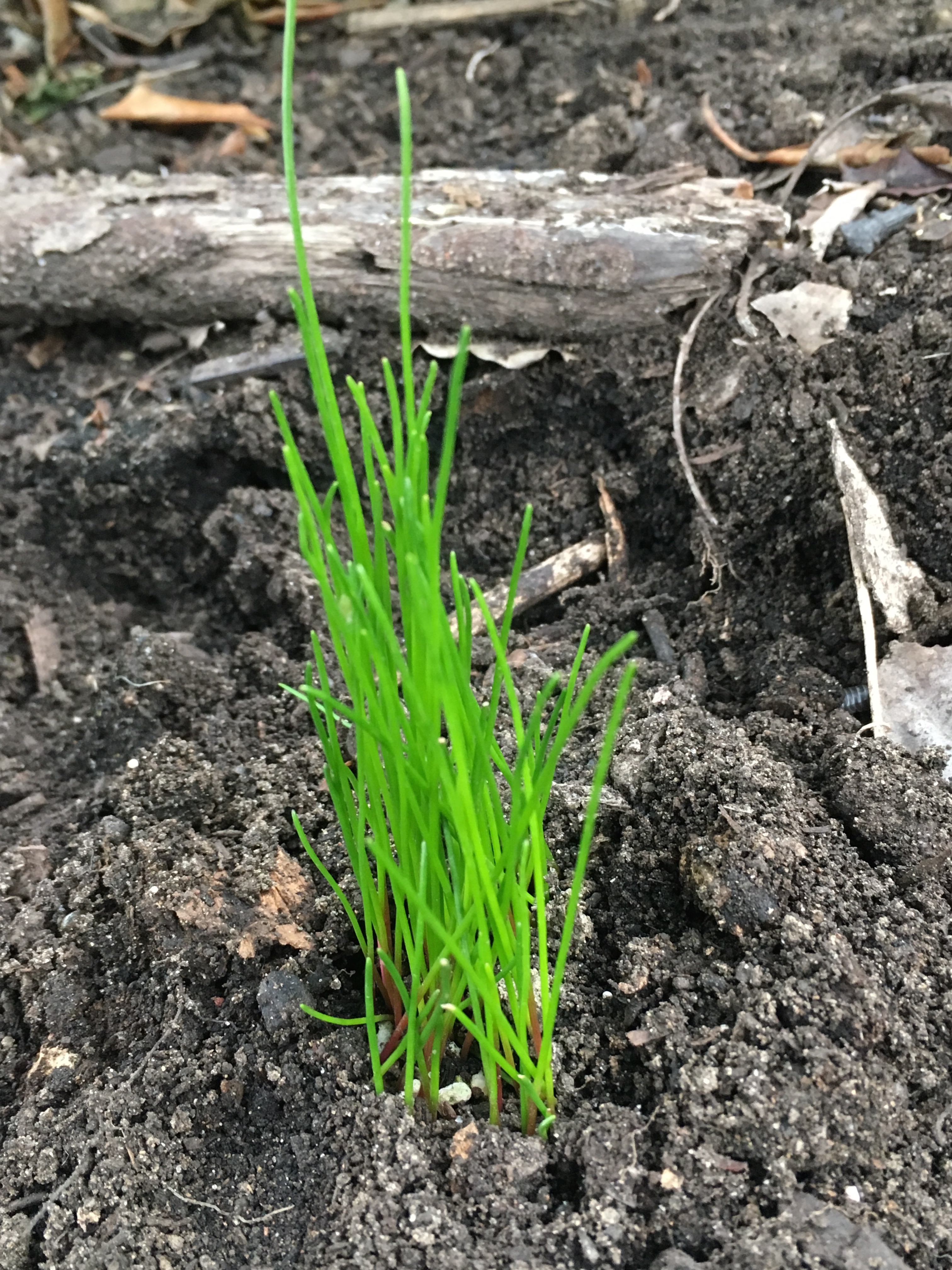


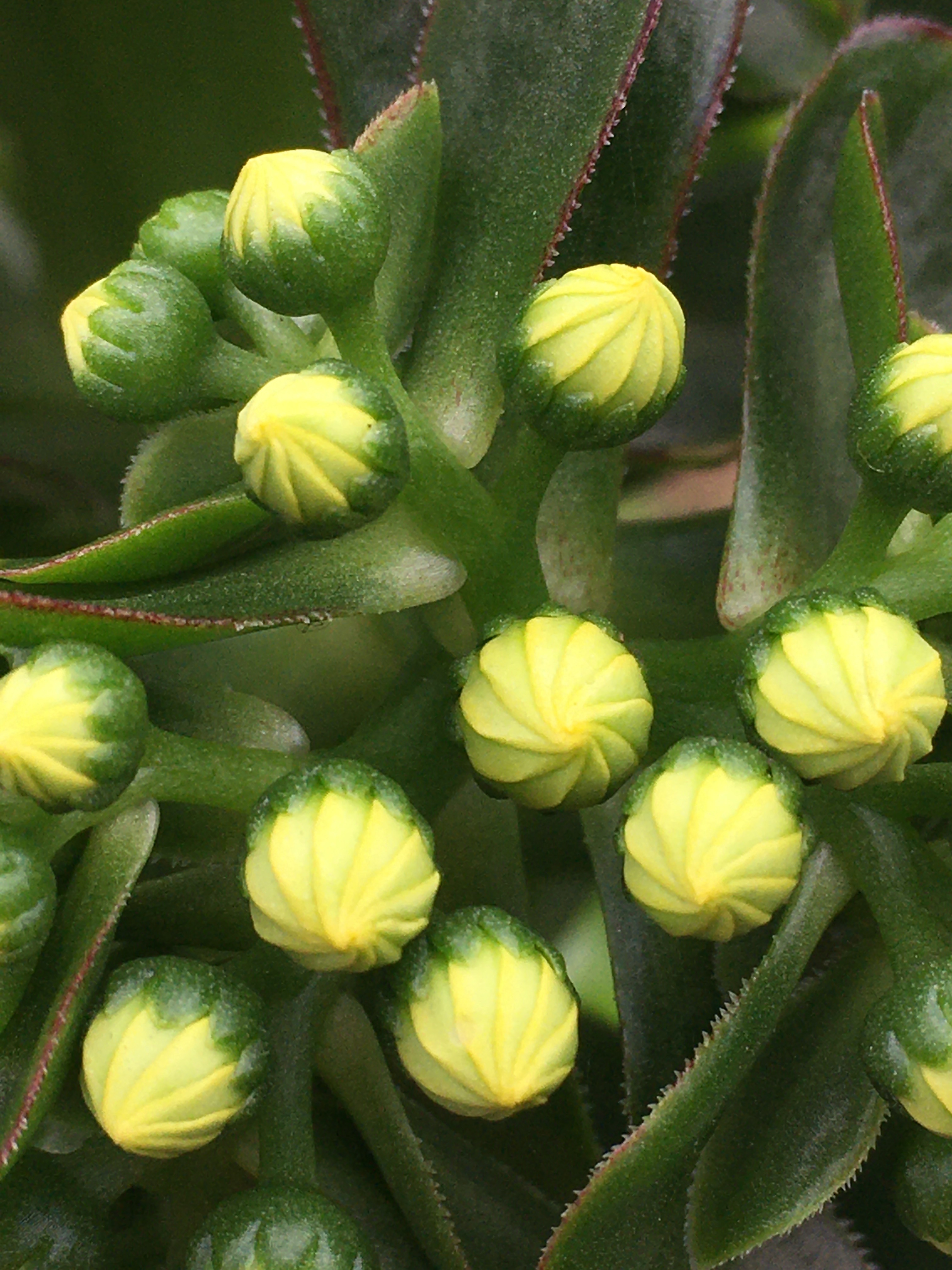


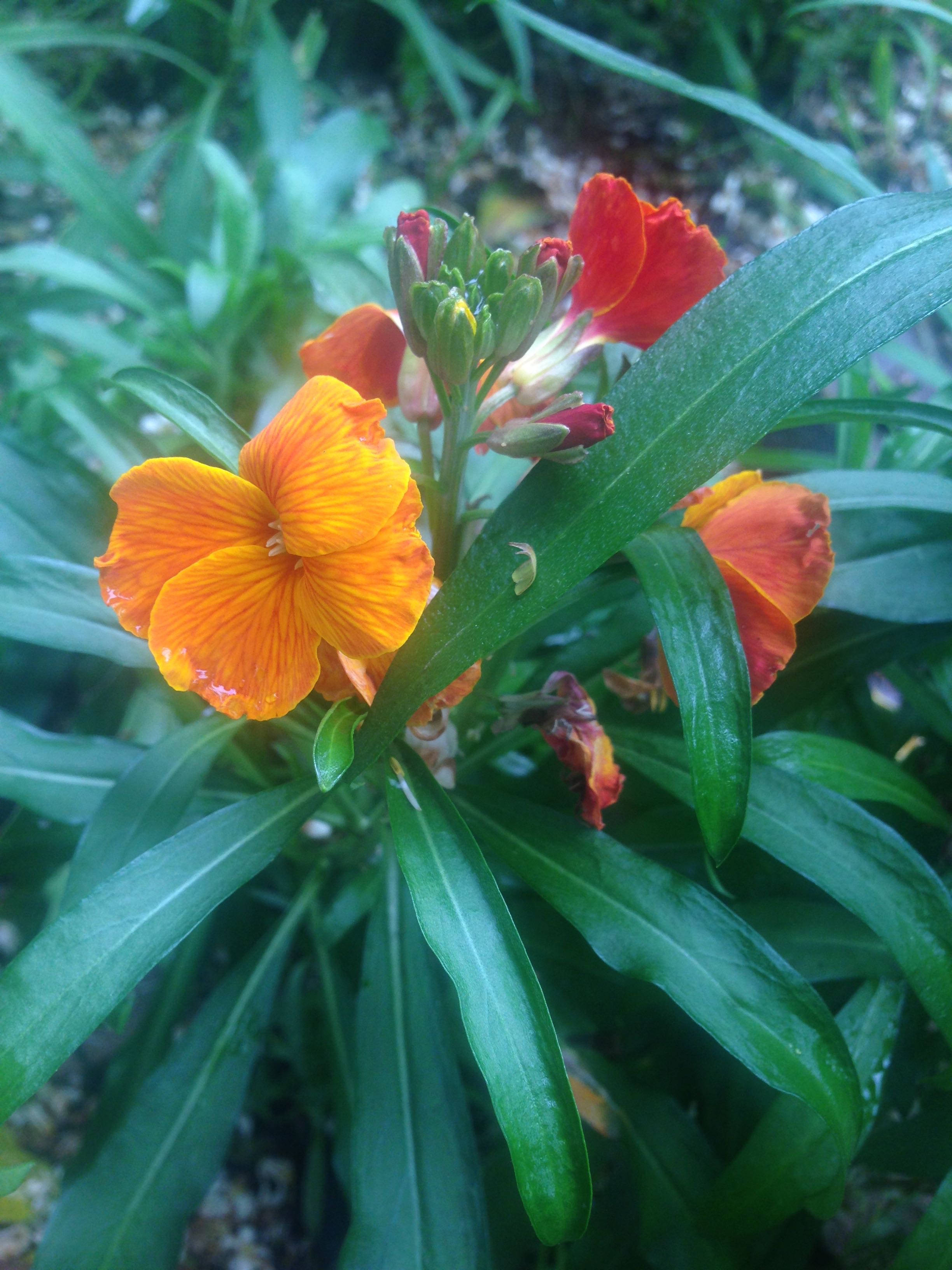
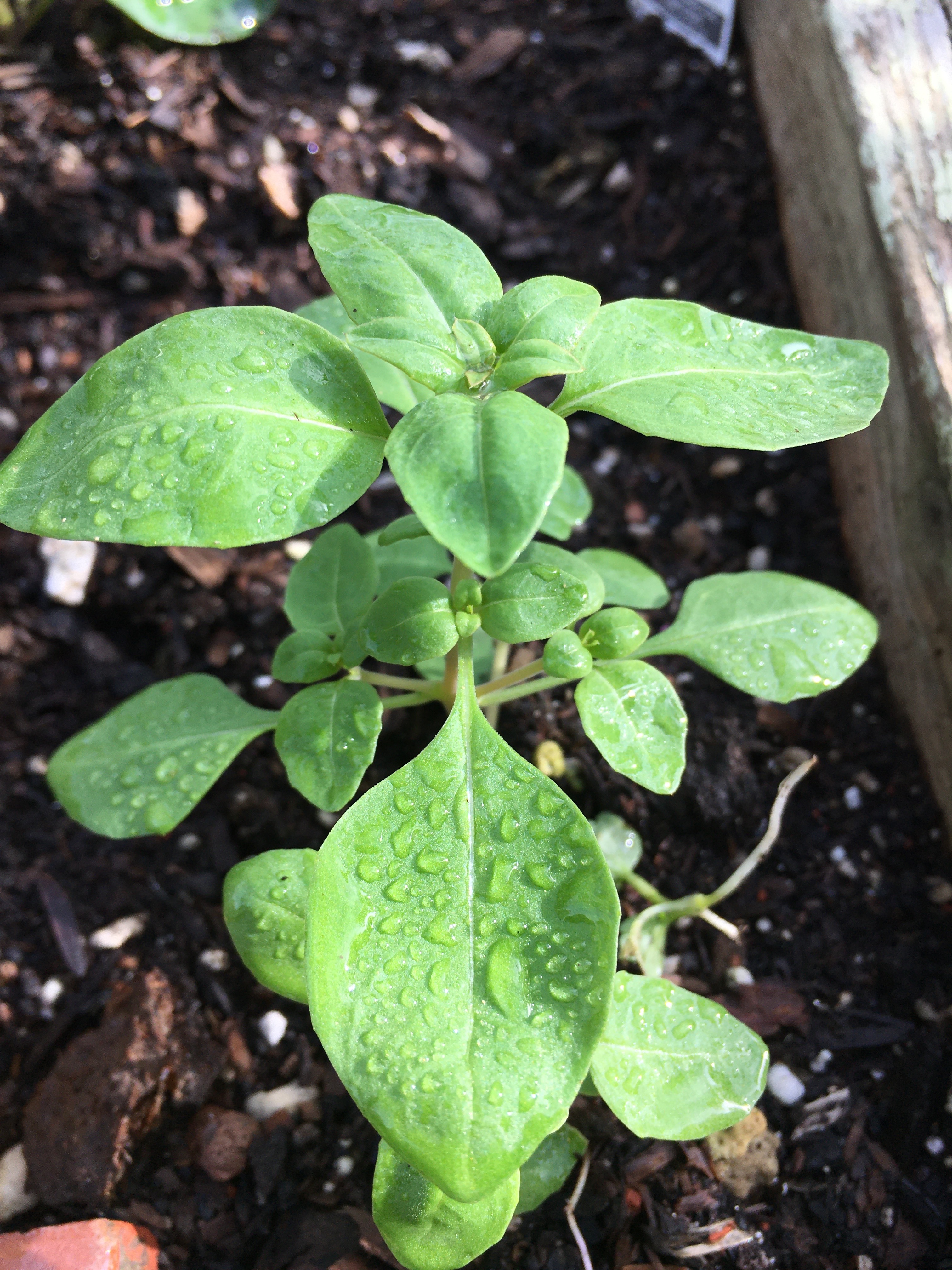
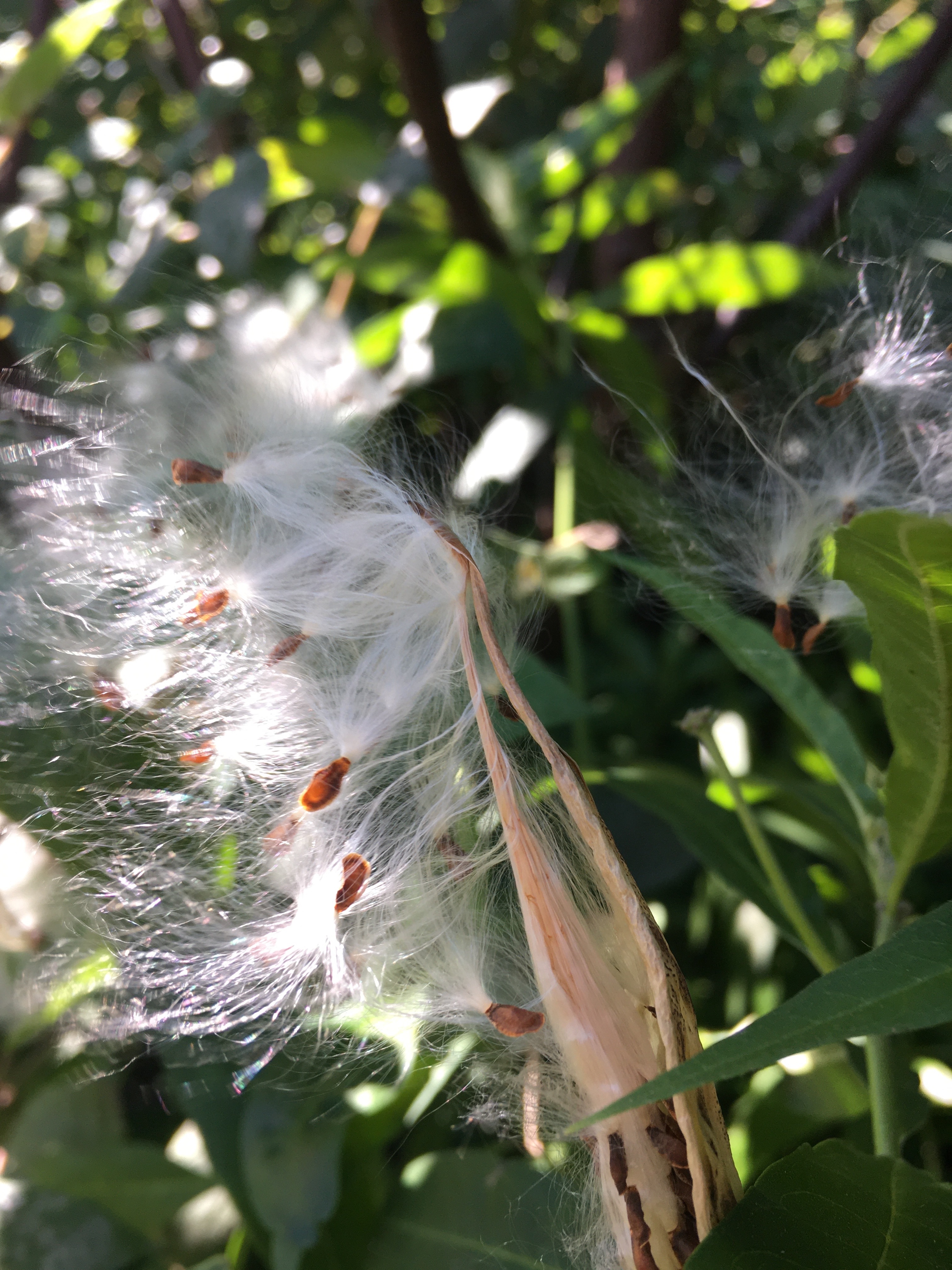
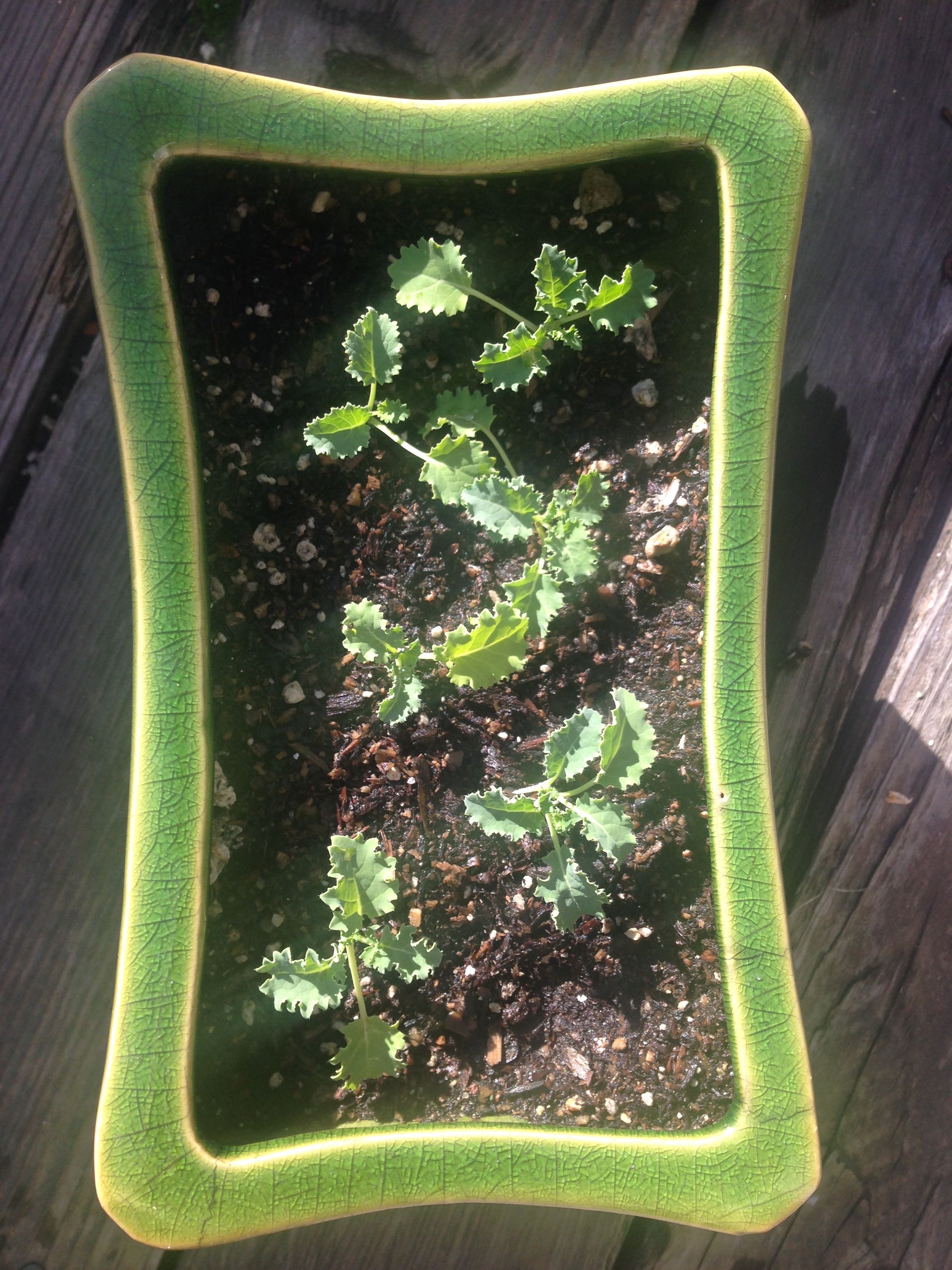
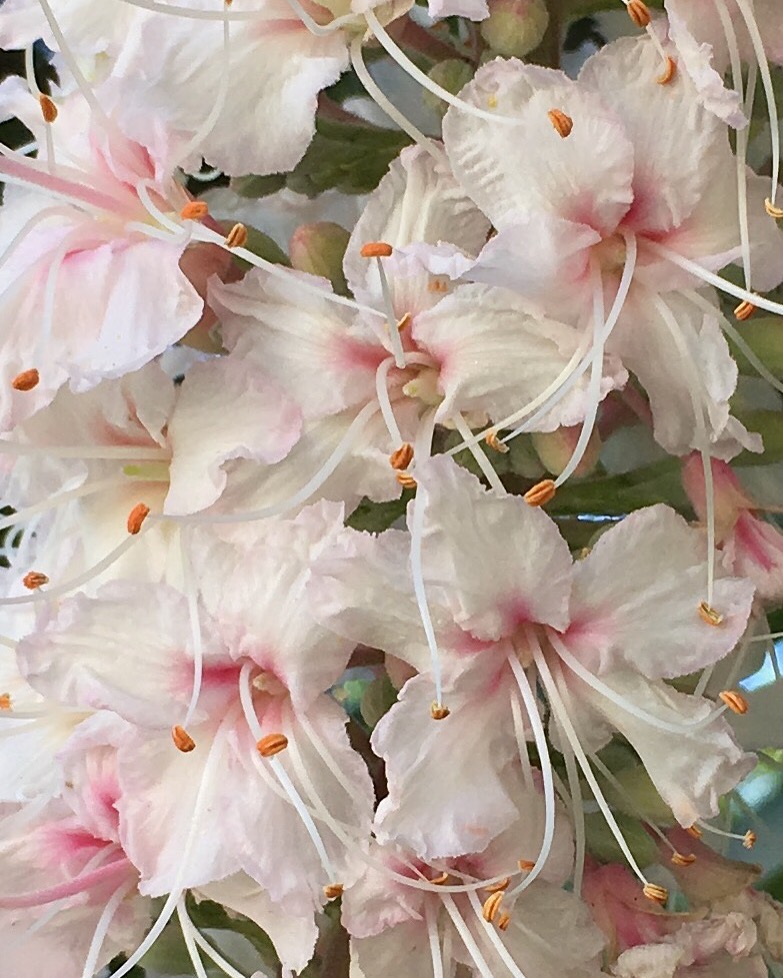

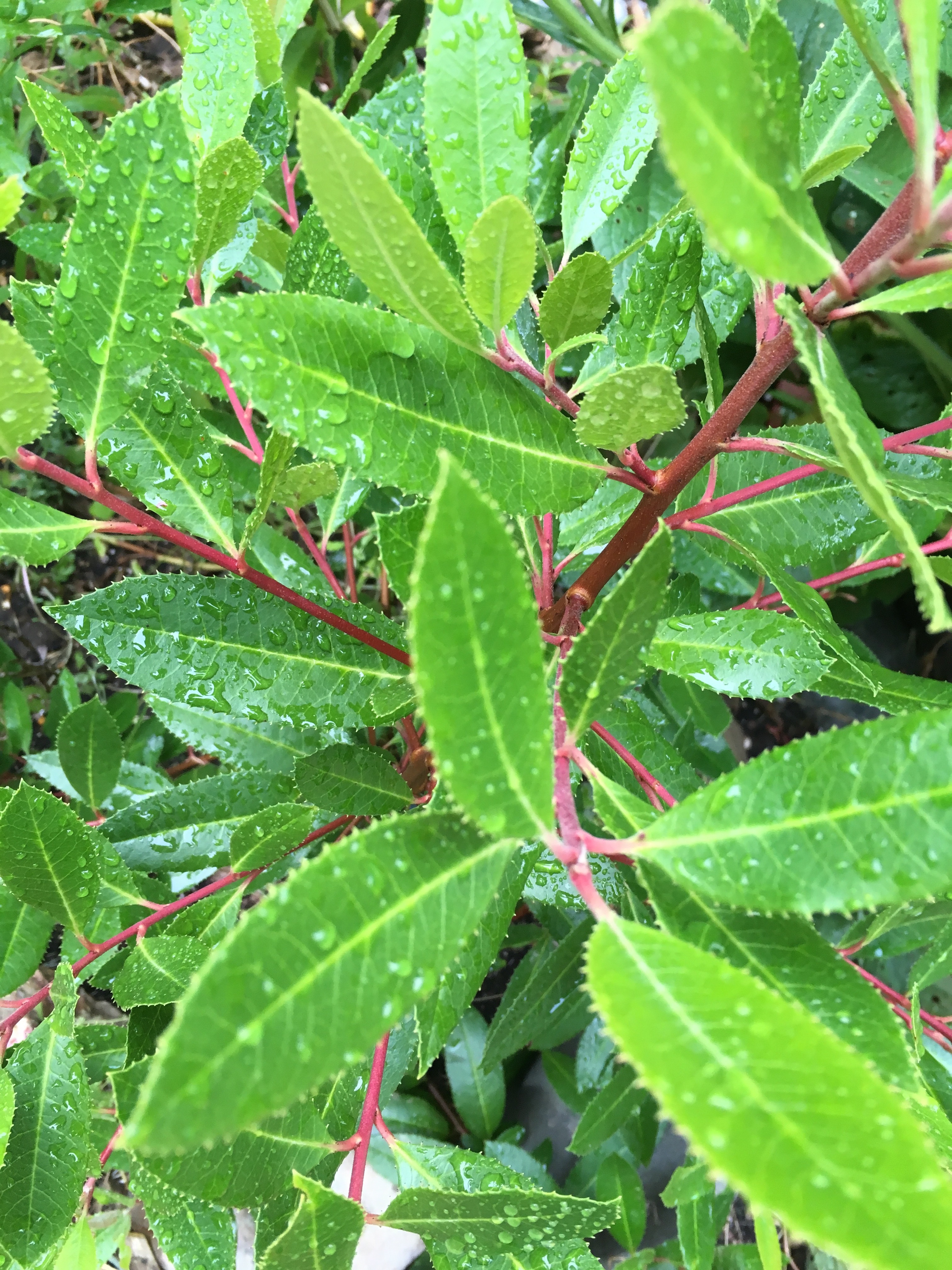


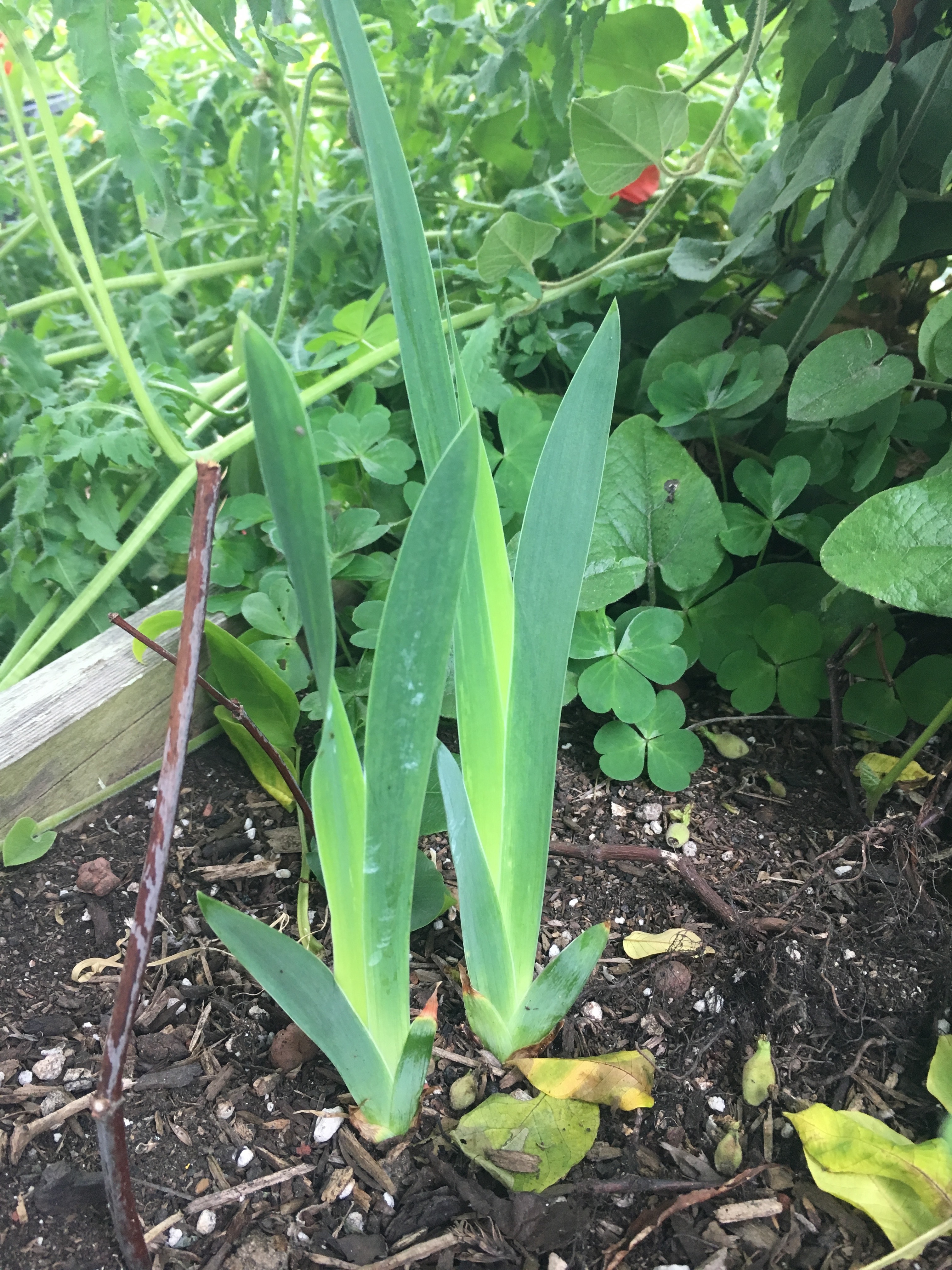


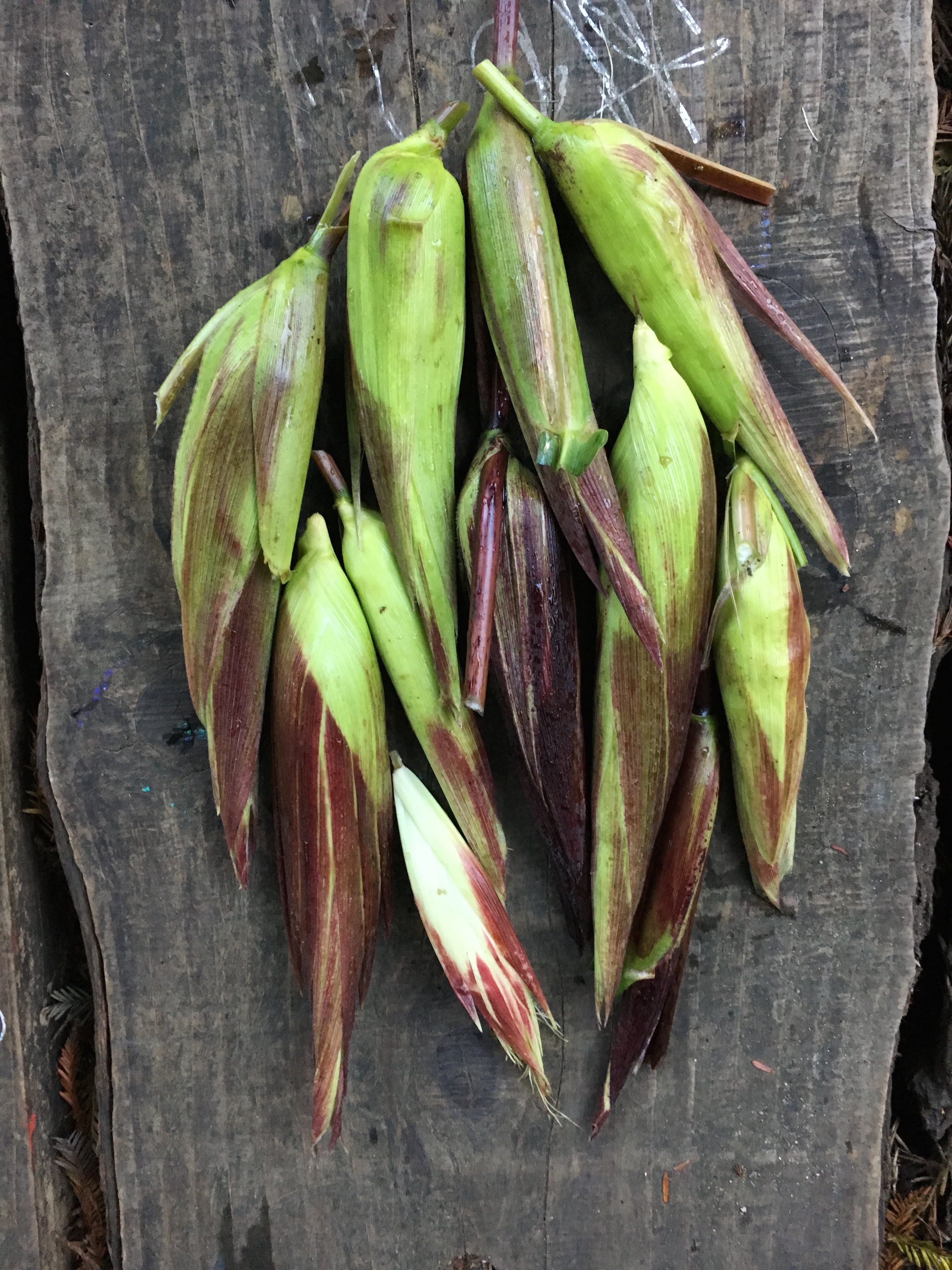

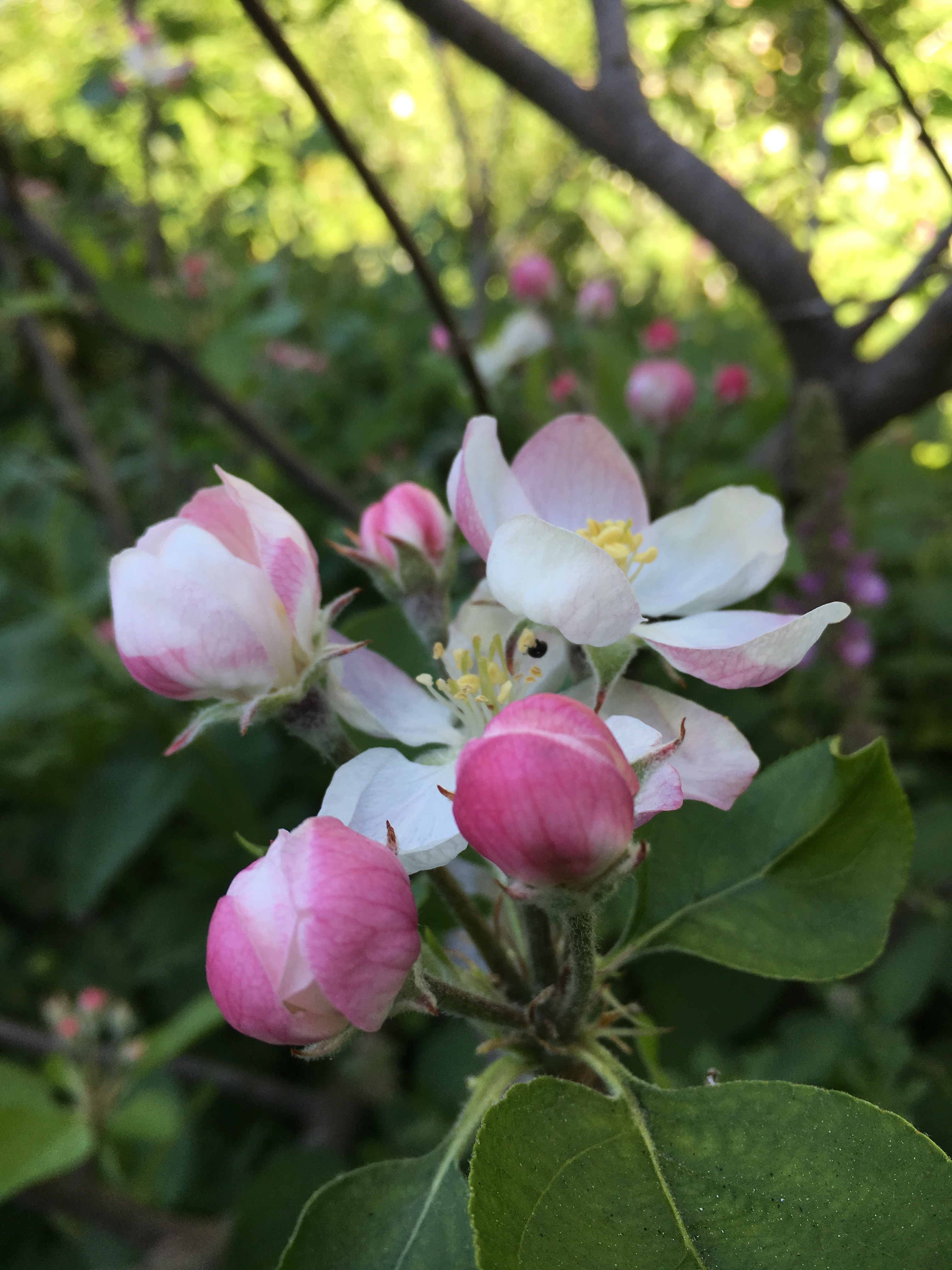





My partner, Elizabeth Day, is an avid pruner, and she has dedicated many days to caring for the perennials, shrubs, and trees in the meadow. She will say, “Today’s going to be a light day,” and then six hours later a whole area will be refreshed, a whole cluster of Ribes and elderberry, shaped and clarified.
Another light day’s work for Elizabeth might be completely overhauling the soil and plantings in the bamboo bed John Roloff and his students built in 2015. The bed is a beautiful structure and John wanted to have this planting be an ongoing source of materials for sculpture students.
The bed is a very stable structure and a few years ago someone enlisted its sturdy frame to support a large slab of particle board and then used a belt sander on the piece, leaving a dense blanket of horrible muck caked solid. It would have actually been fine—helpful even!—had the piece been solid wood, but the components of particleboard clogging the top layer of soil were not at all conducive to the life of what was growing there. Elizabeth got in there and removed all of it and replaced it with a fresh layer of compost. In that bamboo bed, and throughout this meadow I see where she has tended to the plants, always with an eye toward making more space for them to breathe and flourish.
Way back at the beginning, in fall 2014, Anthony Rum, an SFAI neighbor, appeared one afternoon and offered to help out. He said he’d been walking through the space and saw great potential in it. Anthony was completely instrumental in establishing some of the early beds. He had a magic quality, often showing up at just the right moment. A particularly Anthony-esque moment comes to mind, and by Anthony-esque, I mean a gesture that elegantly solves what seems to be an intractable problem. In this case, the person who had brought their wood chipper to use on the day the arborists trimmed the buckeye somehow forgot the key to the wood chipper. Anthony sized it up, and I’m actually not sure how he did it, but in a few minutes he had it running, with no key.
These stories get very layered, the associations cascade from just looking at one scented geranium leaf or an iris from painting teacher Frances McCormack, just a slip with a root, and now fully established in three different areas.
I want to make a map of the meadow, marking specific traces of the people who’ve cared for the plants, and the stories that abound in even one square yard of ground, an impossible task to ever complete, but that in itself is the essential beauty of the garden.
GL
Secondary Connections
Another light day’s work for Elizabeth might be completely overhauling the soil and plantings in the bamboo bed John Roloff and his students built in 2015. The bed is a beautiful structure and John wanted to have this planting be an ongoing source of materials for sculpture students.
The bed is a very stable structure and a few years ago someone enlisted its sturdy frame to support a large slab of particle board and then used a belt sander on the piece, leaving a dense blanket of horrible muck caked solid. It would have actually been fine—helpful even!—had the piece been solid wood, but the components of particleboard clogging the top layer of soil were not at all conducive to the life of what was growing there. Elizabeth got in there and removed all of it and replaced it with a fresh layer of compost. In that bamboo bed, and throughout this meadow I see where she has tended to the plants, always with an eye toward making more space for them to breathe and flourish.
Way back at the beginning, in fall 2014, Anthony Rum, an SFAI neighbor, appeared one afternoon and offered to help out. He said he’d been walking through the space and saw great potential in it. Anthony was completely instrumental in establishing some of the early beds. He had a magic quality, often showing up at just the right moment. A particularly Anthony-esque moment comes to mind, and by Anthony-esque, I mean a gesture that elegantly solves what seems to be an intractable problem. In this case, the person who had brought their wood chipper to use on the day the arborists trimmed the buckeye somehow forgot the key to the wood chipper. Anthony sized it up, and I’m actually not sure how he did it, but in a few minutes he had it running, with no key.
These stories get very layered, the associations cascade from just looking at one scented geranium leaf or an iris from painting teacher Frances McCormack, just a slip with a root, and now fully established in three different areas.
I want to make a map of the meadow, marking specific traces of the people who’ve cared for the plants, and the stories that abound in even one square yard of ground, an impossible task to ever complete, but that in itself is the essential beauty of the garden.
GL


